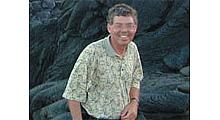Globalstar Proposal Could Impact 2 GHz ENG Channels

Doug Lung
Broadcasters may find more competition for 2.5 GHz channels A9 and A10. Globalstar filed a Petition for Rulemaking last month asking the FCC to allow it to use part of its Mobile Satellite Service (MSS) spectrum at 2483.5-2500 MHz (channel A10) for “an innovative terrestrial low-power service (TLPS) offering.”
Globalstar would combine its spectrum at 2483.5-2495 MHz with adjacent unlicensed industrial, scientific and medical (ISM) spectrum at 2473-2483.5 MHz, the upper portion of 2 GHz ENG channel A9, to create a 22 MHz wide channel that could be used with existing IEEE 802.11 technology. This frequency band is already available for unlicensed devices in other countries as WiFi Channel 14.
In the Petition, Globalstar says, “If the Commission implements the necessary regulatory reforms to enable this hybrid approach, it will add 22 megahertz to the nation's wireless broadband spectrum inventory. In addition, this spectrum will be put quickly to use as American consumers utilize their existing 802.11-enabled devices to receive TLPS.”
Globalstar said that to protect the integrity of the band, it will provide TLPS only to authenticated users and devices and will “utilize available network management and security technologies to prevent unauthorized use of this spectrum.”
Globalstar eventually wants to deploy an FDD LTE network on its Big LEO band spectrum. Globalstar is licensed to use 1610-1618.725 MHz for satellite uplink operations, in addition to 2483.5-2500 MHz for satellite downlink.
Nowhere in the Petition does Globalstar mention the use of this spectrum by broadcasters.
While the FCC is no longer issuing licenses for broadcast auxiliary service (BAS) use of 2483.5-2500 MHz, existing users are grandfathered. Section 74.602(a)(2) of the FCC Rules states: “Existing licensees as of July 25, 1985, and licensees whose initial applications were filed on or before July 25, 1985, are grandfathered and their operations are on a co-primary basis with the mobile satellite and radiodetermination-satellite services, and in the segment 2495-2500 MHz, their operations are also on a co-primary basis with Part 27 fixed and mobile except aeronautical mobile service operations.”
This is probably why Globalstar is not proposing to use 2495-2500 for its future terrestrial services. As users of BAS ENG channels A8 and A9 know and Section 74.602(a)(1) states, “Frequencies shown above between 2450 and 2500 MHz in Band A are allocated to accommodate the incidental radiations of industrial, scientific, and medical (ISM) equipment, and stations operating therein must accept any interference that may be caused by the operation of such equipment. Frequencies between 2450 and 2500 MHz are also shared with other communication services and exclusive channel assignments will not be made, nor is the channeling shown above necessarily that which will be employed by such other services.”
Some time ago the Society of Broadcast Engineers proposed reducing the size of channels A8-A10, the same way the size of the 2 GHz channels were reduced for the reallocation of 1990-2025 MHz, to make the top end of the band 2483.5 MHz. When this was proposed, one of the major issues was how it would be paid for. Now that all 2 GHz ENG equipment is already configured to use the narrower bandwidths on the lower 2 GHz band, that shouldn't be as much of an issue. It may be time to dust off that proposal.
Get the TV Tech Newsletter
The professional video industry's #1 source for news, trends and product and tech information. Sign up below.
Doug Lung is one of America's foremost authorities on broadcast RF technology. As vice president of Broadcast Technology for NBCUniversal Local, H. Douglas Lung leads NBC and Telemundo-owned stations’ RF and transmission affairs, including microwave, radars, satellite uplinks, and FCC technical filings. Beginning his career in 1976 at KSCI in Los Angeles, Lung has nearly 50 years of experience in broadcast television engineering. Beginning in 1985, he led the engineering department for what was to become the Telemundo network and station group, assisting in the design, construction and installation of the company’s broadcast and cable facilities. Other projects include work on the launch of Hawaii’s first UHF TV station, the rollout and testing of the ATSC mobile-handheld standard, and software development related to the incentive auction TV spectrum repack.
A longtime columnist for TV Technology, Doug is also a regular contributor to IEEE Broadcast Technology. He is the recipient of the 2023 NAB Television Engineering Award. He also received a Tech Leadership Award from TV Tech publisher Future plc in 2021 and is a member of the IEEE Broadcast Technology Society and the Society of Broadcast Engineers.

